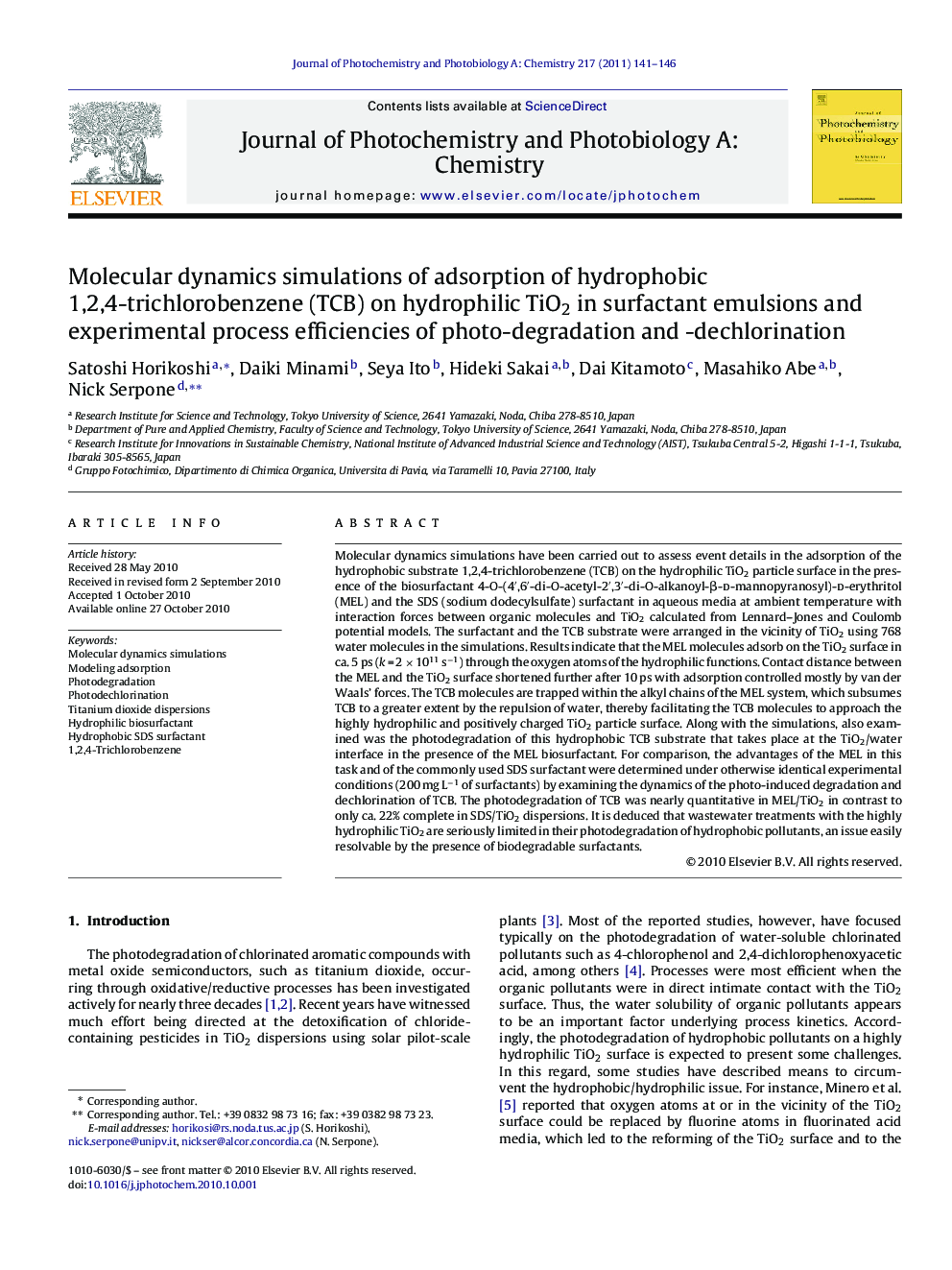| Article ID | Journal | Published Year | Pages | File Type |
|---|---|---|---|---|
| 27565 | Journal of Photochemistry and Photobiology A: Chemistry | 2011 | 6 Pages |
Molecular dynamics simulations have been carried out to assess event details in the adsorption of the hydrophobic substrate 1,2,4-trichlorobenzene (TCB) on the hydrophilic TiO2 particle surface in the presence of the biosurfactant 4-O-(4′,6′-di-O-acetyl-2′,3′-di-O-alkanoyl-β-d-mannopyranosyl)-d-erythritol (MEL) and the SDS (sodium dodecylsulfate) surfactant in aqueous media at ambient temperature with interaction forces between organic molecules and TiO2 calculated from Lennard–Jones and Coulomb potential models. The surfactant and the TCB substrate were arranged in the vicinity of TiO2 using 768 water molecules in the simulations. Results indicate that the MEL molecules adsorb on the TiO2 surface in ca. 5 ps (k = 2 × 1011 s−1) through the oxygen atoms of the hydrophilic functions. Contact distance between the MEL and the TiO2 surface shortened further after 10 ps with adsorption controlled mostly by van der Waals’ forces. The TCB molecules are trapped within the alkyl chains of the MEL system, which subsumes TCB to a greater extent by the repulsion of water, thereby facilitating the TCB molecules to approach the highly hydrophilic and positively charged TiO2 particle surface. Along with the simulations, also examined was the photodegradation of this hydrophobic TCB substrate that takes place at the TiO2/water interface in the presence of the MEL biosurfactant. For comparison, the advantages of the MEL in this task and of the commonly used SDS surfactant were determined under otherwise identical experimental conditions (200 mg L−1 of surfactants) by examining the dynamics of the photo-induced degradation and dechlorination of TCB. The photodegradation of TCB was nearly quantitative in MEL/TiO2 in contrast to only ca. 22% complete in SDS/TiO2 dispersions. It is deduced that wastewater treatments with the highly hydrophilic TiO2 are seriously limited in their photodegradation of hydrophobic pollutants, an issue easily resolvable by the presence of biodegradable surfactants.
